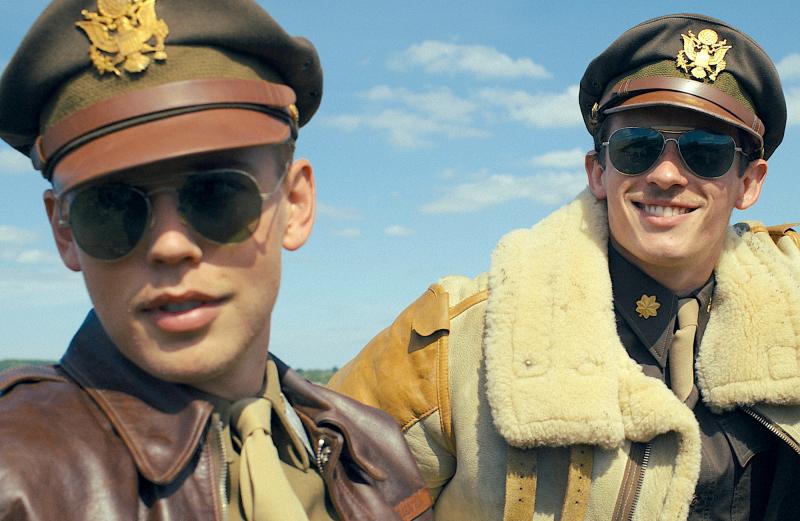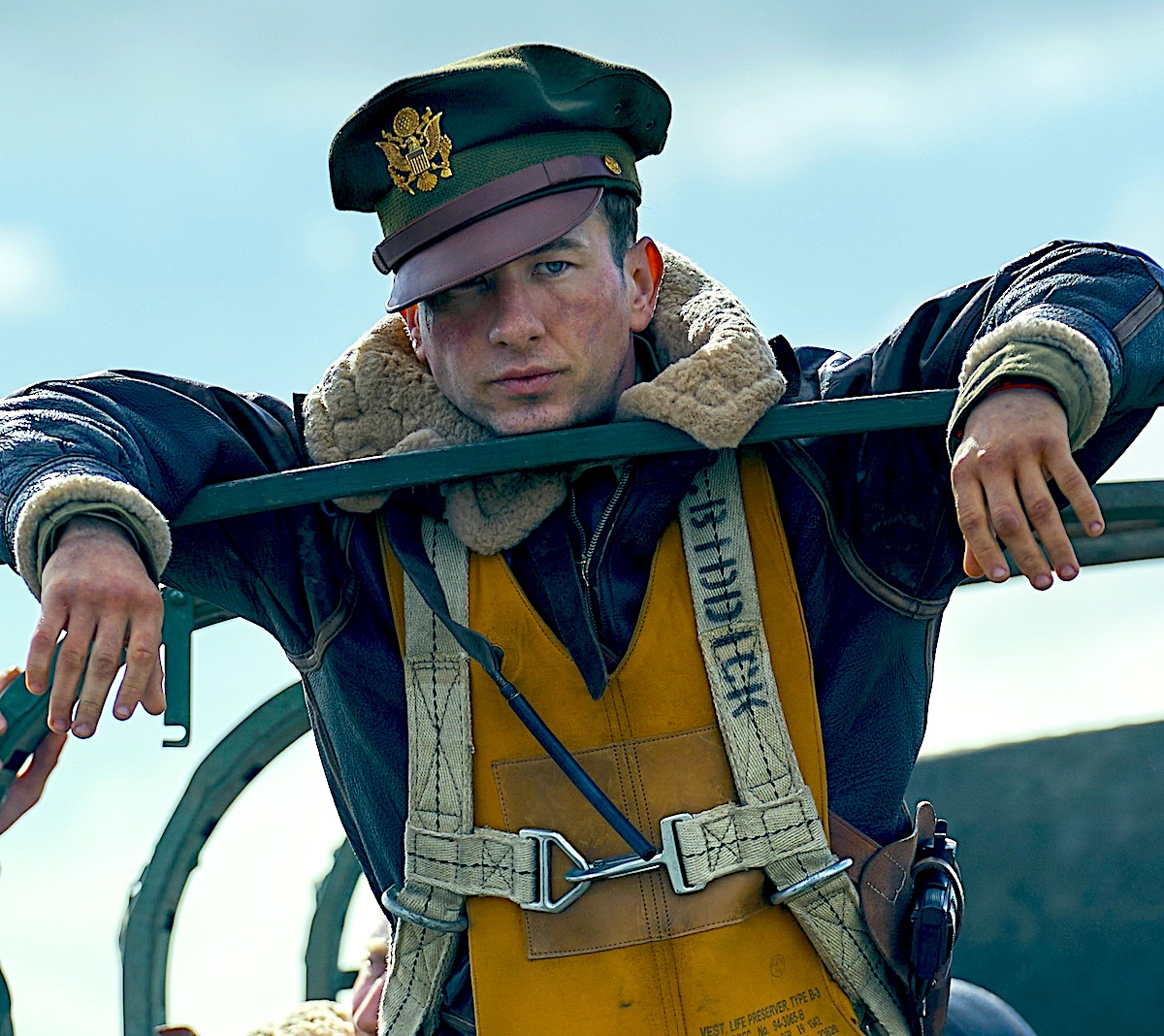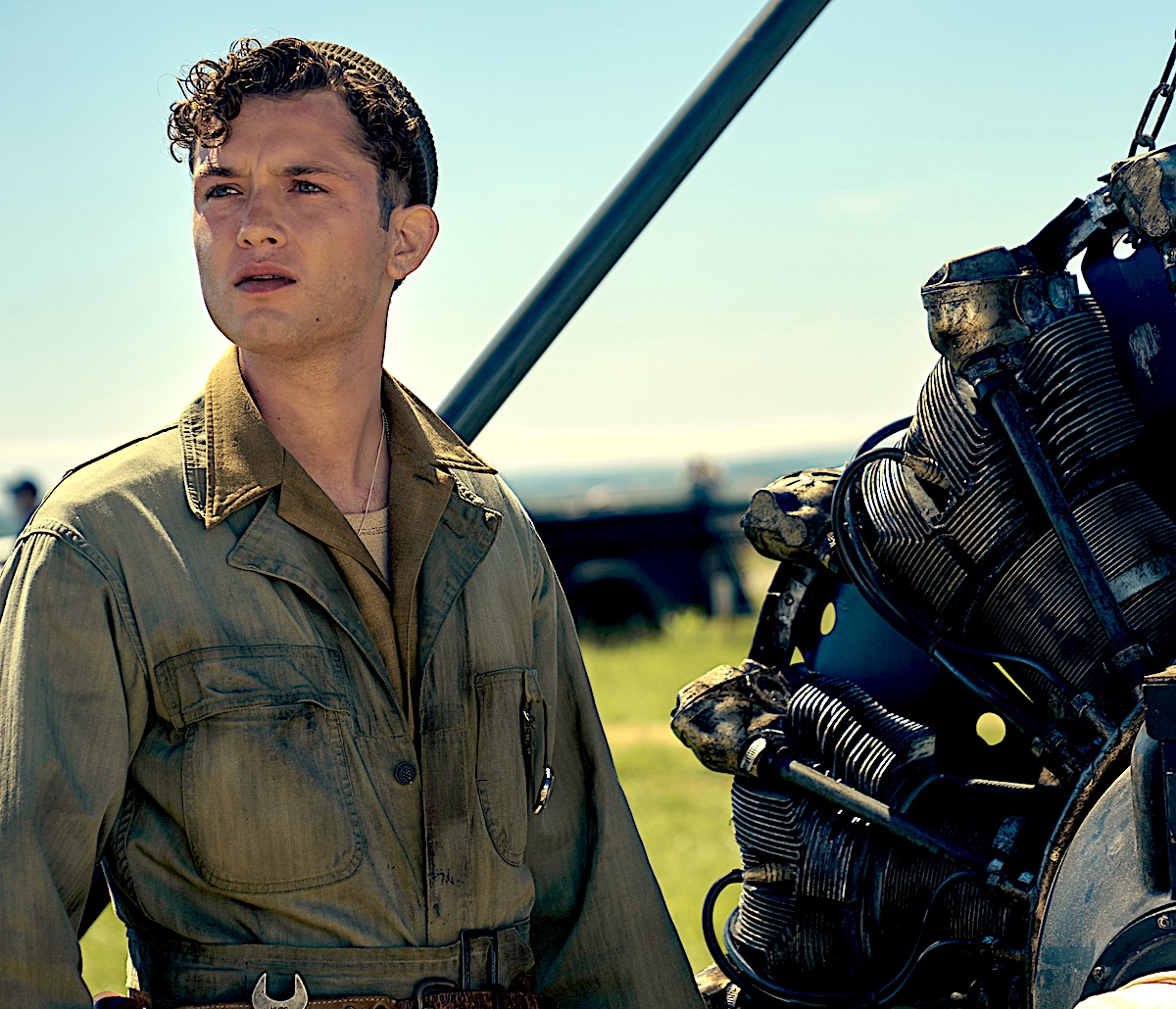Masters of the Air, Apple TV+ review - painful and poignant account of the Eighth Air Force's bombing campaign | reviews, news & interviews
Masters of the Air, Apple TV+ review - painful and poignant account of the Eighth Air Force's bombing campaign
Masters of the Air, Apple TV+ review - painful and poignant account of the Eighth Air Force's bombing campaign
Tom Hanks and Steven Spielberg's long-awaited epic of the war in European skies

“Are they all like that?” asks a shaken Major Bucky Egan (Callum Turner), after he’s completed his first bombing mission over Germany as a guest of the US Eighth Air Force’s 389th Bomb Group. They’ve been battered by flak and lacerated by German fighters, and the front half of their B-17 bomber looks like an abattoir.
And history does indeed repeat itself after Bucky’s compadres from 100th Bomb Group catch up with him at their airfield at Thorpe Abbotts in Norfolk, having flown in from the States via Greenland. This time it’s Bucky’s close pal Gale “Buck” Cleven (Austin Butler) who’s just made his debut on a raid on Bremen, in which his squadron has lost three aircraft but couldn’t even bomb the target because of cloud cover. “Why didn’t you tell me?” demands Buck. “I didn’t know what to say. You’ve seen it now,” Bucky replies (pictured below, Barry Keoghan).
 What these airmen saw could never be unseen, though many of them never wanted to talk about it, and Masters of the Air rams it home to the viewer with frequently unbearable intensity. Blake Neely's symphonic score mixes the poignant and the heroic in carefully measured proportions. Based on historian Donald L Miller’s book of the same name, the series cost $250m to make, and it’s all up there on the screen. Like Band of Brothers and The Pacific before it, it’s produced by Tom Hanks and Steven Spielberg, who have an almost OCD-like commitment to getting the details right (this all began with their collaboration on Saving Private Ryan).
What these airmen saw could never be unseen, though many of them never wanted to talk about it, and Masters of the Air rams it home to the viewer with frequently unbearable intensity. Blake Neely's symphonic score mixes the poignant and the heroic in carefully measured proportions. Based on historian Donald L Miller’s book of the same name, the series cost $250m to make, and it’s all up there on the screen. Like Band of Brothers and The Pacific before it, it’s produced by Tom Hanks and Steven Spielberg, who have an almost OCD-like commitment to getting the details right (this all began with their collaboration on Saving Private Ryan).
The flying sequences inevitably rely on plenty of computerised assistance, but the production used a couple of life-sized replicas of B-17s to enable them to recreate an authentic feel of what it was like inside these lumbering monsters, from the cramped cockpit and bomb-aimer's position to the claustrophobic cage of the ball turret underneath the aircraft, where many a gunner must have been trapped as their aircraft plummeted from the sky.
Life on a wartime airbase has been recreated with fastidious care, from the briefing rooms, sleeping quarters and canteens to the workshops and dispersal areas. There are also plausible depictions of local village life (albeit mainly the pub) and the reactions of the Norfolk locals to the appearance of these young Americans in their midst. Masters hits a rare false note in a scene where the Americans meet some RAF flyers, who are portrayed as sneery, patronising toffs, as if nobody had thought it was worth doing a bit of research on the personnel who made up the RAF’s Bomber Command (pictured below, Anthony Boyle).
 But the aerial scenes slap you round the face with the hideous violence of the air war, with aircraft being suddenly wrecked by a blizzard of cannon shells shattering perspex and metal and tearing gaping holes in flesh. Flak bursts around the aircraft with a physical shock which makes you twitch, and there’s a fearful sense of adrenalin-pumping panic as gunners try to get the German fighters in their sights as they flash past in a split second.
But the aerial scenes slap you round the face with the hideous violence of the air war, with aircraft being suddenly wrecked by a blizzard of cannon shells shattering perspex and metal and tearing gaping holes in flesh. Flak bursts around the aircraft with a physical shock which makes you twitch, and there’s a fearful sense of adrenalin-pumping panic as gunners try to get the German fighters in their sights as they flash past in a split second.
Many sequences have a hallucinatory, trance-like quality which make them lodge unforgettably in the mind. There’s a panoramic shot of a B-17 fleet flying serenely over the Alps, trailing long white contrails behind them in the freezing air as the mountains drift past below. Shots of massed interceptors appearing as a bunch of dots in the distance, then rushing meteorically right into your face as they pounce on the bombers, make you wonder how anybody survived this recurring nightmare, in temperatures reaching minus 50 degrees (26,000 Eighth Air Force crewmen died). We see blazing aircraft spinning out of control as if in a kind of suspended animation, reminiscent of the real-life footage in William Wyler’s documentary Memphis Belle, an obligatory source for this production. There’s one extraordinary moment when Buck is gazing disbelievingly at a sky filled with pieces of shattered aircraft drifting in slow motion, as a solitary crewman with no parachute tumbles past his cockpit (pictured below, Raff Law as Sgt Ken Lemmons).
 As much care has been taken with casting as with the technical aspects. Turner is superb as Egan, using his natural daredevil cockiness to mask his all-too-acute realisation of the appalling odds the flyers are facing. Butler’s Cleven is calmer and quieter, but determined to fulfil his command responsibilities to the bitter end. There’s excellent support from the suddenly-ubiquitous Barry Keoghan as another pilot, Curtis Biddick, while Anthony Boyle shines as Lt Harry Crosby, a navigator with an airsickness problem, and who also provides a voice-over to the narrative.
As much care has been taken with casting as with the technical aspects. Turner is superb as Egan, using his natural daredevil cockiness to mask his all-too-acute realisation of the appalling odds the flyers are facing. Butler’s Cleven is calmer and quieter, but determined to fulfil his command responsibilities to the bitter end. There’s excellent support from the suddenly-ubiquitous Barry Keoghan as another pilot, Curtis Biddick, while Anthony Boyle shines as Lt Harry Crosby, a navigator with an airsickness problem, and who also provides a voice-over to the narrative.
There’s not a lot of scope for female performers in this boys’-own air war, but Bel Powley seizes the moment to put in a fine turn as Alexandra Wingate, who has a brief affair with Crosby which can’t last because of her secretive undercover work.
As the series progresses, it stretches out into a wider perspective of the course of the war. There’s a narrative thread about downed flyers being helped to escape by the Belgian resistance, and the experiences of captured airmen as the Allies close in on Berlin throw some cold light on the Third Reich as it flails around in its death throes. Masters of the Air has taken a decade to reach the screen, but it was worth the wait. It’s an epic achievement.
- Masters of the Air is on Apple TV+ from 26 January
rating
Share this article
Add comment
more TV
 Blue Lights Series 2, BBC One review - still our best cop show despite a slacker structure
The engaging Belfast cops are less tightly focused this time around
Blue Lights Series 2, BBC One review - still our best cop show despite a slacker structure
The engaging Belfast cops are less tightly focused this time around
 Baby Reindeer, Netflix review - a misery memoir disturbingly presented
Richard Gadd's double traumas are a difficult watch but ultimately inspiring
Baby Reindeer, Netflix review - a misery memoir disturbingly presented
Richard Gadd's double traumas are a difficult watch but ultimately inspiring
 Anthracite, Netflix review - murderous mysteries in the French Alps
Who can unravel the ghastly secrets of the town of Lévionna?
Anthracite, Netflix review - murderous mysteries in the French Alps
Who can unravel the ghastly secrets of the town of Lévionna?
 Ripley, Netflix review - Highsmith's horribly fascinating sociopath adrift in a sea of noir
Its black and white cinematography is striking, but eventually wearying
Ripley, Netflix review - Highsmith's horribly fascinating sociopath adrift in a sea of noir
Its black and white cinematography is striking, but eventually wearying
 Scoop, Netflix review - revisiting a Right Royal nightmare
Gripping dramatisation of Newsnight's fateful Prince Andrew interview
Scoop, Netflix review - revisiting a Right Royal nightmare
Gripping dramatisation of Newsnight's fateful Prince Andrew interview
 RuPaul’s Drag Race UK vs the World Season 2, BBC Three review - fun, friendship and big talents
Worthy and lovable winners (no spoilers) as the best stay the course
RuPaul’s Drag Race UK vs the World Season 2, BBC Three review - fun, friendship and big talents
Worthy and lovable winners (no spoilers) as the best stay the course
 This Town, BBC One review - lurid melodrama in Eighties Brummieland
Steven Knight revisits his Midlands roots, with implausible consequences
This Town, BBC One review - lurid melodrama in Eighties Brummieland
Steven Knight revisits his Midlands roots, with implausible consequences
 Passenger, ITV review - who are they trying to kid?
Andrew Buchan's screenwriting debut leads us nowhere
Passenger, ITV review - who are they trying to kid?
Andrew Buchan's screenwriting debut leads us nowhere
 3 Body Problem, Netflix review - life, the universe and everything (and a bit more)
Mind-blowing adaptation of Liu Cixin's novel from the makers of 'Game of Thrones'
3 Body Problem, Netflix review - life, the universe and everything (and a bit more)
Mind-blowing adaptation of Liu Cixin's novel from the makers of 'Game of Thrones'
 Manhunt, Apple TV+ review - all the President's men
Tobias Menzies and Anthony Boyle go head to head in historical crime drama
Manhunt, Apple TV+ review - all the President's men
Tobias Menzies and Anthony Boyle go head to head in historical crime drama
 The Gentlemen, Netflix review - Guy Ritchie's further adventures in Geezerworld
Riotous assembly of toffs, gangsters, travellers, rogues and misfits
The Gentlemen, Netflix review - Guy Ritchie's further adventures in Geezerworld
Riotous assembly of toffs, gangsters, travellers, rogues and misfits
 Oscars 2024: politics aplenty but few surprises as 'Oppenheimer' dominates
Christopher Nolan biopic wins big in a ceremony defined by a pink-clad Ryan Gosling and Donald Trump seeing red
Oscars 2024: politics aplenty but few surprises as 'Oppenheimer' dominates
Christopher Nolan biopic wins big in a ceremony defined by a pink-clad Ryan Gosling and Donald Trump seeing red

Comments
Brave, wonderful boys. But
Brave, wonderful boys. But once again Brit hater Spielberg loses no opportunity to sideline and sneer at British forces. What is his problem? A vast sense of American inferiority complex is my guess.
Absoluteky agree, very upset
Absolutely agree, very upset over these lies. MOTA is consigned to my American alternate History dumpster. Stopped watching over the fight scene.